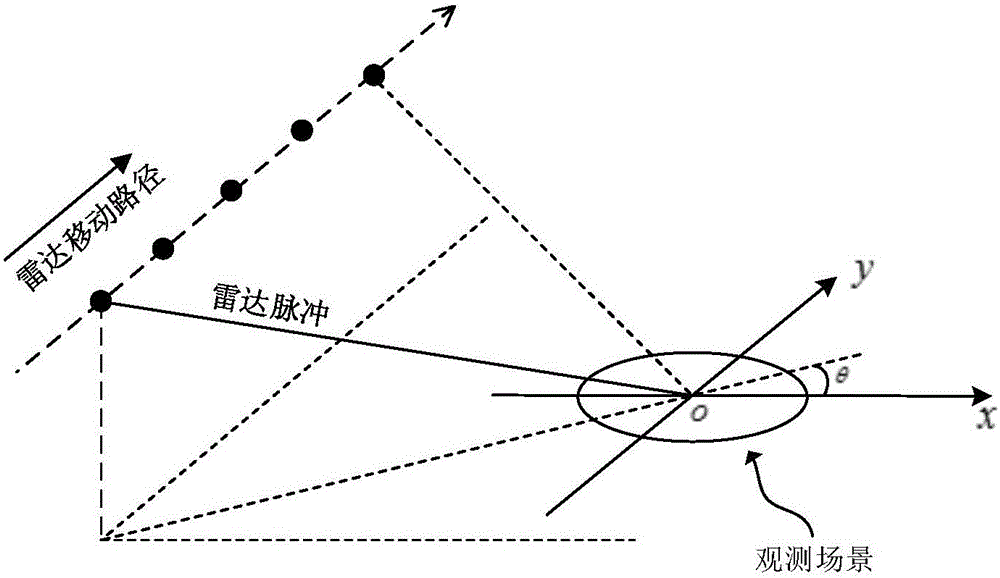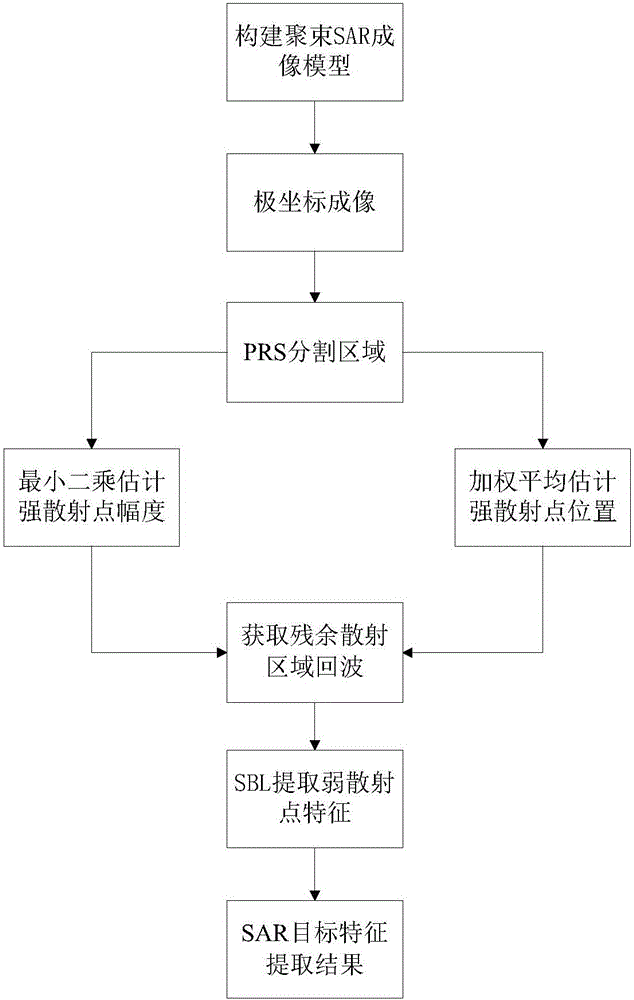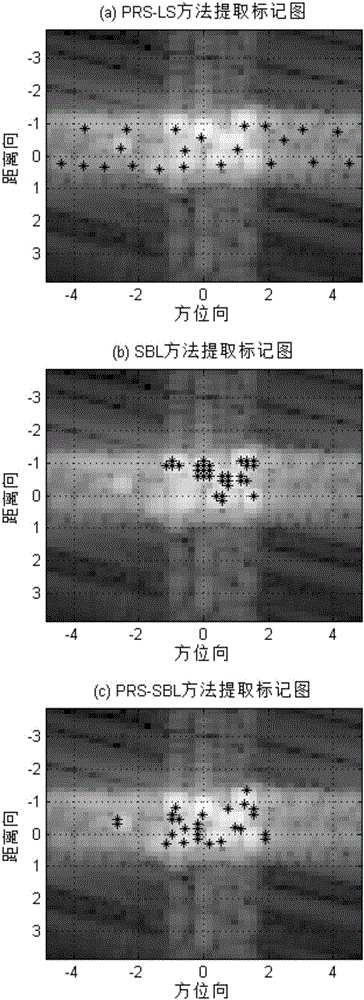Target feature extraction method used for synthetic aperture radar
A technology of synthetic aperture radar and target features, applied in the field of radar, can solve the problems of not considering spatial structure information, low computational efficiency, easy to be affected by noise, etc. Effect
- Summary
- Abstract
- Description
- Claims
- Application Information
AI Technical Summary
Problems solved by technology
Method used
Image
Examples
Embodiment Construction
[0047] Below in conjunction with accompanying drawing, describe technical scheme of the present invention in detail:
[0048] The SAR geometric structure used in the present invention is as figure 1 As shown in , the radar continuously transmits and receives pulses to the target scene while moving along the moving path, and θ is the angle formed between the radar pulse and the y-axis of the scene.
[0049] refer to figure 2 , the specific implementation steps of the present invention are as follows:
[0050] Step 1, build a spotlight SAR imaging model:
[0051] 1.1) According to the electromagnetic theory, when the electrical size of the target scatterer is much larger than the wavelength, the high-frequency electromagnetic scattering properties of the target can be represented by the synthesis of local scattering properties, and these local scattering are usually called equivalent multi-scattering centers, thus The echo expression in the high-frequency region is obtained:...
PUM
 Login to View More
Login to View More Abstract
Description
Claims
Application Information
 Login to View More
Login to View More - R&D
- Intellectual Property
- Life Sciences
- Materials
- Tech Scout
- Unparalleled Data Quality
- Higher Quality Content
- 60% Fewer Hallucinations
Browse by: Latest US Patents, China's latest patents, Technical Efficacy Thesaurus, Application Domain, Technology Topic, Popular Technical Reports.
© 2025 PatSnap. All rights reserved.Legal|Privacy policy|Modern Slavery Act Transparency Statement|Sitemap|About US| Contact US: help@patsnap.com



